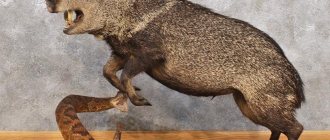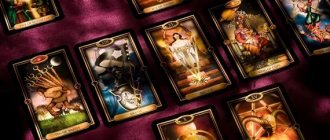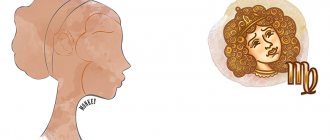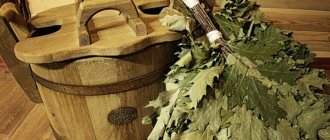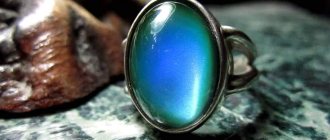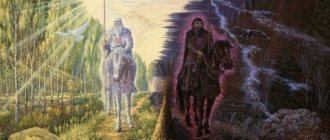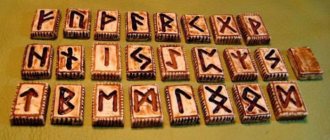The traditional art of New Zealand's indigenous Maori people is highly symbolic. This manifests itself in literally everything. On carvings, on tattoos, on wickerwork made by Maori - everywhere you can see the image of traditional Maori symbols.
Of course, symbolism is a phenomenon characteristic of all world cultures. However, it acquired special significance among peoples who did not have a written language, which included the Maori before the era of colonization of New Zealand by Europeans.
Indeed, Maori writing appeared only in the 19th century, thanks to European educators. Until that time, the knowledge of the ancestors was transmitted through generations orally and through symbolic art.
Traditional Maori symbols represent the core spiritual values of Maori culture and the beliefs of the Maori people. They reflected the close connection of the Maori with nature and their interest in astronomy. By knowing the meaning of Maori symbolism and studying the works of art they created, you can learn a lot about their traditions, historical events of the pre-colonial period of New Zealand, Maori legends and the lives of their ancestors.
Souvenir talismans and Maori amulets, which tourists often bring back from trips to New Zealand, also carry a certain meaning. So if you are planning a trip to New Zealand and want to buy “something like that” as a gift for your loved ones, today’s article will be very useful to you.
Ankh
Ankh, or ankh, Coptic cross, is an ancient Egyptian hieroglyph. It is a cross topped with a ring.
One of the most significant symbols of Ancient Egypt, denoting the key of life. Used as a protective talisman and a sign of immortality. Often found in the tombs of pharaohs, it was believed that the artifact would help them continue to reign in the afterlife.
Due to its similarity with the Christian cross, the ankh entered the symbolism of the Coptic Orthodox Church in Alexandria as a symbol of eternal life. Since the end of the twentieth century, it has been widespread in the Gothic subculture. According to esotericists, it is an image of the chakra system. Used in magical cults.
Kotuku (White Heron)
Kotuku is the Maori name for white heron bird. The Kotuku is one of New Zealand's rare bird species and is a bird of particular importance in Maori mythology.
The white heron is the personification of prestige, purity and uniqueness. Comparison with a white heron was considered a compliment among the Maori.
Kotuku symbolizes connection with the other world and is considered a messenger of the spiritual world. Kotuku, like the tiki, is a symbol of the Maori as a people, because like the Maori tribes this beautiful bird came to the land of Aotearoa to stay.
The kotuku can be seen on the New Zealand two dollar coin.
Blooming tree
A flowering tree is one of the most common symbols of life. Found in Slavic, Turkic, Scandinavian, Chinese, Armenian, Persian and Sumerian-Akkadian mythology.
According to the Book of Genesis, it grows in the Garden of Eden and produces fruits that give immortality. Mentioned in the Book of Revelation as a source of healing. In Kabbalah it symbolizes divine providence. In Catholicism it is considered an analogue of the cross, and its fruits are the sign of Jesus and the sacrament. Among Eastern Christians, it symbolizes God's love. In esotericism - the axis between Earth and Heaven.
Chinese New Year: Sacred Cow or Determined Ox?
According to the eastern calendar, the symbol of 2021 is the White Metal Bull or Golden Cow. As you know, the Chinese New Year does not begin on January 1, as in most countries of the globe, but in February. According to astrological calculation, the date of its celebration is the 3rd, and according to the lunar calendar - the 12th. All Chinese celebrate the holiday on February 12th. People, as usual, celebrate it from one to three o'clock in the morning according to their time. Until this moment, it is believed that there was the previous year of the Rat.
In Eastern culture, white is a symbol of purity and the beginning of everything new. So the year under the auspices of this leisurely, but if necessary, energetic and impetuous animal is expected to be generally measured. Luck will be on the side of those who are distinguished by such qualities as decency, reliability, and determination.
The Chinese believe that the most appropriate talisman for this year is in the form of a white metal bull figurine. This will attract wealth, luck and prosperity to the house. Clothing should follow the silver-white shades. The same goes for accessories. And when decorating the house, they refrain from flashy colors. The bull doesn't like all this.
What does this strong, hardworking animal, under whose protection a year will pass, promise? The main interests of people will be the desire to improve their well-being and expand their financial prospects. In general, the year is expected to be calmer than the previous one, which was a leap year. Patience and hard work will bring results, and your efforts will return a hundredfold.
Caduceus
The caduceus, or kerikion, is the rod of Hermes (Mercury), a symbol of inviolability and secret knowledge. It is a staff with wings entwined with two snakes. It is considered a sign of the fusion of opposites - good and evil, darkness and light. In symbolism it means the key to the secrets of the universe, the axis of the world, wisdom, power, spirit and the absence of boundaries.
Toki - Toki (Adze)
- symbolizes strength, determination, power, control.
The Toki shape is an ax head. A toki carved from stone was used by Maori in daily work for cutting and trimming wood, and sometimes as a weapon. It was customary to pass on currents by inheritance.
Toki symbolizes strength, power, determination, certainty and the ability to focus.
Traditional toki-shaped amulets were made of stone or green stone and braided with a special cord. They were given only to very close people. Receiving toki as a gift was considered a great honor.
Ouroboros
Ouroboros is a coiled dragon or snake biting its own tail. One of the oldest symbols of humanity. Found in artifacts of Ancient Egypt and the Aztecs. Has many meanings.
Among the ancient Jews, oururobros symbolized the Old Testament serpent and expulsion from paradise. For the ancient Greeks, this is an analogue of the Phoenix - rebirth and a symbol of new life. In Ancient China it was a sign of good luck. In Ancient India - the infinity of the Universe.
The most common meaning of ouroboros is the cyclical nature of life: the alternation of births and deaths, the threshold moment between non-existence and rebirth, creation and destruction. Among esotericists it is considered a sign of eternity, space, chaos. Used in religions and magic. Alchemists symbolized the philosopher's stone.
(Hei) Matau - fish hook
A fish hook is a talisman, a symbol of strength and courage.
Fishing was traditionally part of the Maori way of life, and a good fishing hook was considered a valuable item. The fish hook indicated man's dependence on the sea for food. An amulet in the shape of (hei) matau, worn around the neck, was a symbol of prosperity, wealth, good health, strength and power. Wearing an amulet (hei) matau is a sign of respect for the sea and marine life.
Also (hei) matau is a talisman that protects a person while traveling by sea, and a symbol that brings good luck.
Cross
After the death of Jesus and his resurrection, the cross is considered a symbol of eternal life and spiritual perfection in Christianity. In addition to the Christian context, this is a sign of the 4 cardinal directions, 4 phases of the moon, 4 elements and 4 basic elements of the universe, a symbol of the intersection of the lines of father and mother at the point of birth. In ancient Chinese culture, this is how the stairway to heaven was depicted.
Other Maori symbols in the form of birds - huia, kaka, torea
Among the birds that have a significance for New Zealanders close to the national symbol - the kiwi bird - are the huia, the kaka parrot and the oystercatcher (torea). Their images appear very often in works of art created by Maori.
Torea amulets made of bone
The long feathers of the huia bird were formerly used to decorate the headdresses of Maori chiefs. Nowadays, the huia design is most often seen on carved wood boxes.
Kaka poria is the Maori name for the giant kaka parrot (Nestor meridionalis), which has greenish-brown plumage. The Maori, who used kaka as food and as bait to catch other birds, caught these parrots using special rings. Such rings could reach 46 cm in diameter. When the rings were not in use, they were worn as amulets. Amulets in the shape of a kaka ring, carved from green stone, were considered especially valuable.
Torea is the Maori name for the oystercatcher. Amulets in the shape of torea symbolize love for the ocean and the connection between the ocean and the earth. This talisman helps its owner find a path in life.
Yin and Yang
The struggle, unity and balance of two opposites - life and death, feminine and masculine principles, Earth and Sky, Moon and Sun, light and darkness, even and odd numbers. Symbol of infinity and world harmony. It is believed that the sign helps eliminate emerging problems and contradictions and strengthens a person’s inner potential.
Manaia - guardian angel
Manaia is a mythical creature - a man with a bird's head and a fish's tail, who is considered a mediator between the gods and mortals. Manaya accumulates spiritual power and, after the death of a person, directs his soul to the right path.
They say about amulets in the form of manaya that they contain a certain aura invisible to others. The manaya amulet is considered a very powerful amulet.
For Maori, manaia is the equivalent of a guardian angel in Western cultures. The Maori believed that manaia had the power to protect their tribes from enemies and guide people to the true spiritual path.
By the meaning that the manaia symbol had for the Maori, one can judge how important spirituality was for them.
There is a Maori expression that can be translated roughly as follows: “The manaia (spiritual guide) guides the mauri (life force) of the fish to a place where it will find peace and quiet. Sometimes this expression is interpreted as a metaphor in which the fish represents a human being or any other creature that has a soul.
Compass
In tattoo art, the Chinese Lo Pan compass, the Viking runic compass and the traditional magnetic compass are especially popular. The image symbolizes the search for a life path. Some believe that the image of a compass can be an amulet that prevents its wearer from getting lost. A sign of space and movement, balance and certainty. Associated with loyalty and constancy.
Pikuroa - twisted spiral
symbolizes unity, connection and relationships, infinity.
Perhaps this is one of the most popular symbols among Maori. There are spirals twisted once, twice and even three times.
Pikuroa, twisted once, denotes the life paths continuously emerging before a person. It symbolizes the close relationship between two people (and if the spiral is twisted three times - between a group of people, communities and entire cultures), devotion and friendship.
A spiral with one twist denotes the spiritual unity of two people in eternity. No matter what path two people take, they will always remain connected by strong bonds and will return to each other.
If you give an amulet in the form of a single twisted spiral to a loved one, you thereby express your friendship, devotion and love to him.
Double- and triple-twisted spirals similarly indicate relationships between groups of people and cultures. Traditionally, the Mori gave double and triple twisted spirals to friendly tribes. During the colonization of New Zealand, such spirals were presented by Maori as a gift to Europeans as a symbol of good intentions.
The symbol of the double twisted spiral serves as an indication of the so-called “three baskets of knowledge.”
According to legend, “three baskets of knowledge” were presented to people by the god Tane - the god of forests, birds and the progenitor of humanity, who created the first man Tiki. These baskets contained everything that people needed to live.
Sketches of fortitude tattoos
Creating a sketch of a strength tattoo must be approached with all thoughtfulness and seriousness. It is necessary to choose a knowledgeable master. Together with him, decide on the information that the tattoo will carry, as well as the style of its execution. Before your first visit to a tattoo parlor, it is better to familiarize yourself with the finished sketches.
Women choose images that emphasize their tenderness, femininity, devotion, or, on the contrary, independence, courage and audacity. Their choice is largely influenced by fashion.
Men always, regardless of fashion, try to emphasize their masculinity by choosing themed tattoos. A man cannot afford to be simply beautiful or daring; he must be brave, demonstrating his strength to the surrounding society. This is an instinct, an echo of our cave past.
